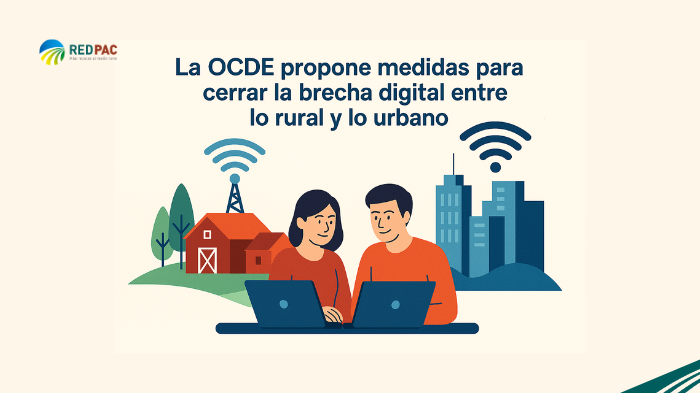
28 de November de 2025
Dinamización rural
Innovación
A report by the organization warns of the persistent inequality in connection speed and quality in rural areas
A report by the organization warns of the persistent inequality in connection speed and quality in rural areas
The study proposes more skills, infrastructure and public-private partnerships to ensure inclusive connectivity
Although internet access has improved in Europe, rural areas still lag behind urban areas in connection speed and quality, according to the new report . from the “Organization for Economic Cooperation and Development” ( OECD ) entitled “ Closing the broadband connectivity gaps for all ”, and published on the Rural Pact platform .
The document puts forward strategic recommendations to reduce the digital divide, from regulatory frameworks that promote competition and efficient spectrum management to targeted investments and community networks. The goal: to ensure affordable and robust connectivity that allows rural areas to benefit from digitalization, innovation, and climate action.
The rural digital divide
The report reveals that rural users suffer from significantly lower mobile download speeds and less stable services. This situation limits their access to essential services, economic opportunities, and digital tools that are now indispensable for competitiveness and quality of life.
Ensuring digital connectivity in rural areas not only boosts economic development but also reduces service delivery costs, strengthens socioeconomic resilience, and prepares communities for future challenges. The OECD calls for coordinated action to ensure no region is left behind in the digital transition.
The OECD analysis identifies five major shortcomings in rural connectivity:
Uneven network availability: lower fiber coverage and persistence of areas without basic access.
Insufficient quality : low speeds, high latency, and lower stability.
High costs : higher prices and little competition.
Data and measurement deficit : lack of accurate indicators and maps.
Regulatory and investment obstacles : complex processes and low profitability for service operators.
Recommendations
To close the digital divide, the OECD recommends a comprehensive approach that combines:
Boost competition and simplify regulations to facilitate deployments.
Invest in resilient infrastructure (fiber and 5G) with public-private models.
Promote community and cooperative networks in remote areas.
Improve affordability with tailored aid and rates .
Optimize spectrum management to maximize coverage.
Strengthen measurement and transparency through detailed maps and harmonized indicators.
Spanish case of good practices
The European Commission has highlighted two projects in the latest European Digital Connectivity Awards , including one from Spain:
“ FTTH Gigabit Access Network ” (Spain) : an initiative in Castilla y León that demonstrates that bringing ultra-fast connectivity to peripheral rural areas is possible with cooperative models and strategic alliances.
The deployment of a Gigabit FTTH Access Network in rural areas of Castile and León is a coordinated effort by Pedro Abad and Manuel Garnelo, in collaboration with Asteo Red Neutra. This project aims to provide high-speed, reliable internet connectivity to areas traditionally excluded from digital development. The backbone transmission infrastructure, spanning over 1,900 km, will connect more than 500 towns and villages in the autonomous communities of Extremadura and Castile and León, guaranteeing the highest quality of service standards for connectivity.ERMES (Italy) : fiber optic deployment in Friuli Venezia Giulia through regional collaboration and innovative solutions.
What is the OECD?
The Organisation for Economic Co-operation and Development (OECD) is an international organization that brings together 38 countries to promote policies that improve economic and social well-being worldwide. Its analyses and recommendations are a global benchmark in areas such as rural development, innovation, sustainability, and digitalization.









